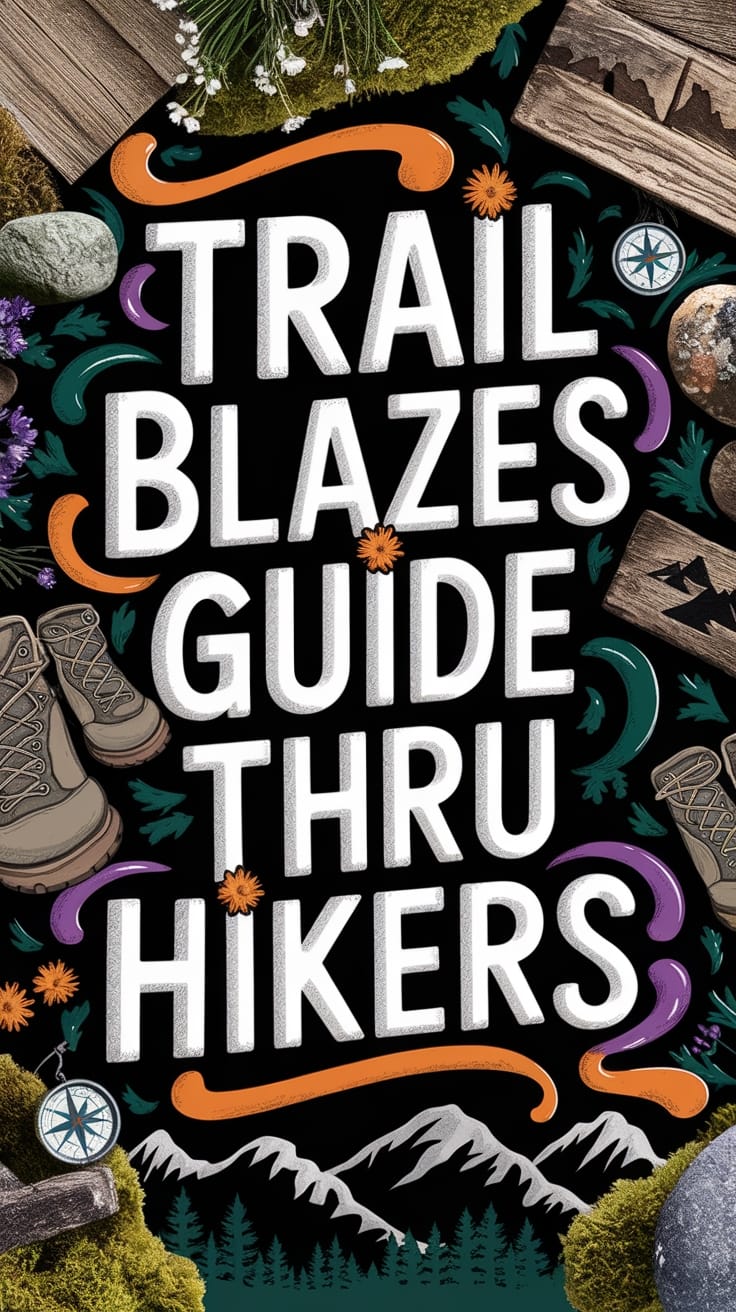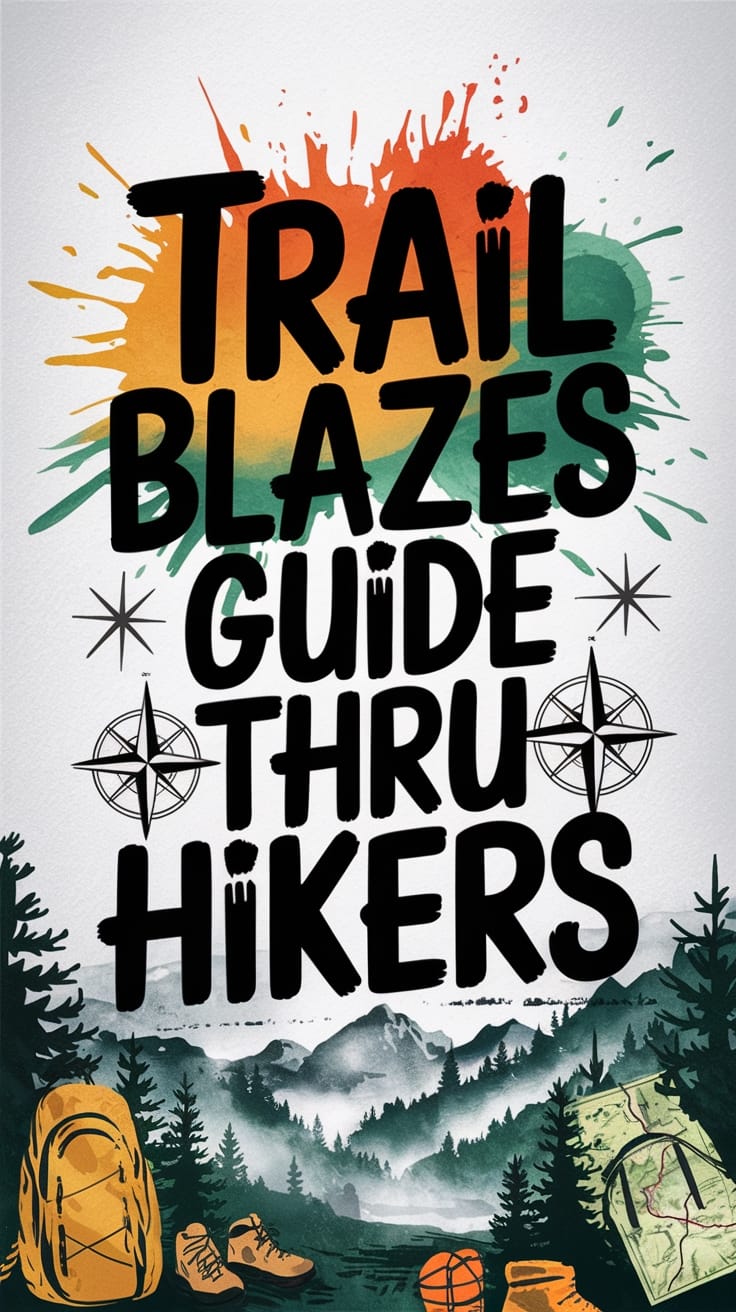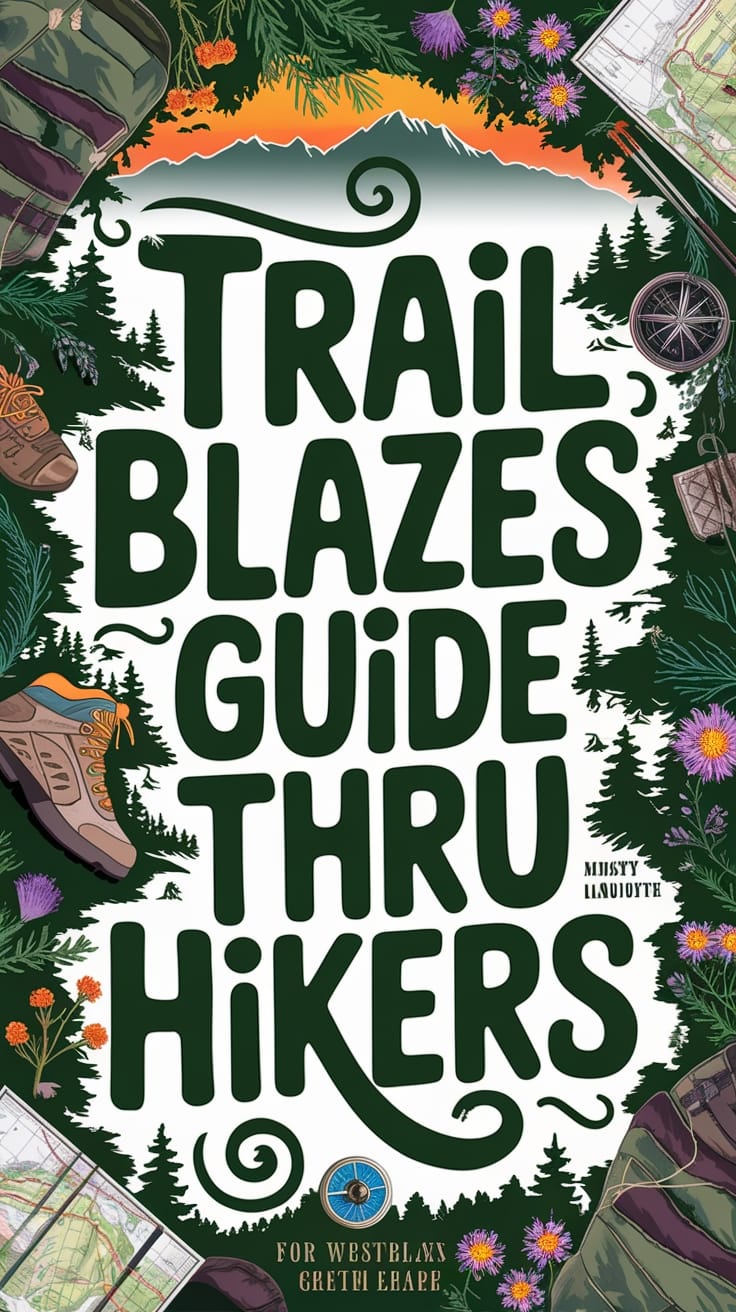For those who have made the decision to hike a long trail and assemble all their gear, you've taken the time to get mentally prepared and physically prepared, why would you want to bypass parts of the trail?
Understanding trail markings like hiking blazes is important on a thru-hike and ensuring you travel the right way each time!
Hiking blazes serve an essential role on the trail, and they can keep you moving in the right direction when all other signs have evaporated.
Take the time to learn these trail marker symbols they will guide you on your hiking journeys!
What Are Blazes and Why Do You Need Them?
A frequent question by nearly all new hikers centers around the trail and their confusion on how you don't get lost on the trail. This leads them to learn more and ask what blazes or trail markings are in hiking.
A trail blaze mark helps provide direction, showing you where to head next and ensuring you don't lose the trail and get lost. Blazes are crucial. l component of trail upkeep and are used to signal critical spots such as the start and finish of a trail, a change of course, or another trail intersection.
Now that we have gone over why trail marking, like blazes, helps to provide on the trail, we can now go a little further and explain the typical blaze setup and how you can read them with ease while out on the trail.
How to Read and Follow Trail Markers
In general, most trails are blazed fairly similarly with a majority featuring painted blazes, though some trails may deviate from the standard they are an exception to the rule.
So then that leads you to the question of how to read trail blazing.
For most a single blaze means to continue straight, on double blazes the top blaze indicates the direction to turn to follow the trail. Most of the time 3 blazes mean the beginning or end of a trail or a spur or offshoot trail available.
Let's look into each different way trails are blazed as each provides hiking trail details that are important for you to stay on course in the forest.
Natural lands can easily cause disorientation if you manage to get off the trail, you may get turned around, so let's discuss what blazes look like and their overall meanings.
Straight
This tells you that the trail continues in a generally straight direction without any bends or curves.
These are the most common blazes on most trails and the easiest to understand when learning to follow a trail.

Straight With 2 Blazes
This is two blazes, one on top of the other, and while similar to the above single blaze, it is used when the trail is obscured ahead or when you may have difficulty locating the blaze and is more like a heads-up that you may need to focus more on finding the blaze to stay on track.

Right Turn
This blaze is one lower blaze and then another offset above it to the right.
This is a sign to the blaze reader that the trail will bend to the right ahead and follow the trail to the right side regardless of what may look like a trail in another direction.

Left Turn
This blaze is one lower blaze and then another offset above it to the left. This is, like the right above, a sign to the blaze reader that the trail will bend to the left ahead and follow the trail to the left side regardless of what may look like a trail in any other direction.

Trail Start
This resembles an inverted V, with two blazes low and one centered above them.
This is the blaze that signifies a trail start, as expected there is only one of these at the start of a trail.

Trail End
Similar to the trail start this looks like a proper V with one low blaze and two top blazes. This as with the start of a trail exists only once at the end.

Trail Intersection
This marking is just to ensure you know of any connector trail that runs into your current trail, this will look like two white blazes with a single blaze on the side where the other trail will intercept.

Paint, Cairns, Posts: Common Blaze Types
There are many ways that are used when marking a trail, some require different types of signs to effectively mark the trail.
The most common blaze trail marking paints are typically due to ease of replacement and costs being lower than many other methods.
Marked trails are vital to hikers knowing and following the path and causing less environmental impact while hiking.
Paint
Painted markings can be either on trees or rocks, and there is also a recent trend to use reflective materials so that they can easily be seen at night when hiking.
Paint blazes are the most common and can be used for many hiking trails as it is easy to see on the trail.
This also makes them easy to replace in case one has been damaged or needs replacing so that hikers are able to find their way around a hiking trail with ease.
A part of paint is coloring, the trail marking colors are just to make sure trails are unique and you don't mistakenly hike on the wrong trail.
Cairns

Cairn trail markers are used in large parts above the treeline where paint or markings may not be easy or simply visible.
These stacked rocks have been used for centuries as trail markers and can be found in most mountainous terrains.
While a cairn trail marker doesn't require a lot of material it can take time to build, and manage as many people think they are cool by knocking them down.
This can lead to issues for any future hikers not being able to find their way from point to point easily.
While a rock cairn is really just a pile of rocks, they can last nearly forever through bad weather and other hiking-related conditions and, if built solidly is one of the longest-lasting markers useable on a trail.
Side note, there are also piles of rocks called "trail ducks" which are just much smaller rock piles that are typically stacked enough only to convince the observer it is not a natural formation.
Marking a trail with rocks is a good solution in many places where access to trees and a visible sightline isn't easily possible, but they also don't work in all places so we will talk about more options that can be eye level for a hiker.
Posts
These are hiking trail signs that are buried in the ground much like a fence post which offers signage areas with arrows that are to help point out directions.
Posts are a simple and effective way to communicate multiple converging trails and to help point hikers in the right direction.
They are also fairly simple to replace if they should get broken or damaged without too much effort.
Tags or Affixed Markers
These are typically a plastic or similar badge nailed or attached to a tree or object on the trail.
As you may expect these are less than optimal to LNT principles, but they are longer lasting than paint and can be more effective when hiking in areas with little continual access to repaint.
Cut In or Etching
These are cut or etched into the surface, like cutting the trail symbol into a rock face, tree trunk, or similar hardened object that can be found on hiking trails.
These types of blazing can leave a very long-lasting mark, but they also require good tools, and not everyone has them handy while hiking the trail.
Flags
Trail marking flags are typically tied around a tree trunk and often are for temporary details as they are simple and easy to remove later making them a good temporary solution but less of a long-term marker.
What Do Other Color Blazes Mean? Hiker Slang Explained
There are many non-official blazes that are more like hiker slang than really stand for anything, among these are things like brown blazing, blue blazing, yellow blazing, pink blazing, and many more which I have tried to answer to the best of my abilities below.
What is a White Blaze?
The white paint markings on trees along the Appalachian Trail are 6 inches long and 2 inches wide. These "white blazes" serve as markers to assist hikers in staying on the correct trail route.
The white blaze has become a symbol for much of the thru-hiking community and can be seen referenced in movies, YouTube, and many other forms of popular culture.
What is Yellow Blazing?

Yellow blazes are more a hiker slang than a real trail blaze marking, basically yellow blazing is when hikers choose to skip portions of the trail, choosing to be instead driven further up the trail.
This is frowned upon by many in the thru-hiking community as purists always want to make sure they walk all the steps between the blazes on their thru-hike attempt.
Others will justify it by staying "with friends" because they are falling behind and don't want to lose the tramily, sometimes it happens with injury, but it is to be avoided for a complete thru-hike.
What is Pink Blazing?
The term "pink blaze" is hiker slang that means that a person is hiking to stay caught up with someone they have become infatuated with or want to start a relationship with, it started as "pink blazing" as boys would chase girls but to be honest it happens both ways.
If someone refers to someone as pink blazing, they mean they have lost interest in talking and being around others, and they are heavily focused on keeping pace whether slow or fast with the person of their infatuation.
What is Blue Blazing?
On the Appalachian Trail, side blazes are marked in blue, which are alt routes or side trails to unique views or other points of interest. Many may take these to check out a view and then head back to the main trail to continue on the original trail.
Blue blazes though can be used as a form of "cheating" on the AT where the hikers follow the side trails as shortcuts to cut miles off the main trail and get to places sooner than they normally would.
A blue blaze will be seen on posts and trees and is typically a rectangle that is painted or marked with blue paint similar to the white blaze to let you know that the blue-blazed side trail is a legitimate off-shoot trail and not just a game path animal made.
What is Aqua Blazing?
This one is another trail slang for hikers who choose to take to the rivers for certain sections where you can kayak or use other water travel to move through a section.
While this is bypassing the original trail the intent is fairly similar to see the amazing lands that our country has and even less have seen the water-based paths people take in many ways.
This will not work with purists, but I can see the reason why this would add to a unique experience while hiking for 6 months!
What is Platinum Blazing?
Recently this book has popped up with the popularity of thru-hiking and includes a focus on enjoying the finer things available on the trek, instead of focusing on being as cheap, frugal, or inexpensive as possible.
Combining hiking and their backcountry excursions into engaging with local culinary, cultural, historical, and other recreational experiences.
Typically this approach will add serious expenses to your thru-hike so unless you have the money don't prioritize this approach.
The Importance of Understanding Blazes for Navigation
Blazes are important hiking symbols that indicate the correct route. There is a specific type of blaze for each different hiking trail, such as white blazes on the Appalachian Trail.
Blazes also have come to signify more than just what direction to go: some hikers use them as slang for hiking behaviors!
In the end, understanding each blaze and trail marking helps to keep you safe and hiking on the correct route, even if you use a GPS device or cell phone.









